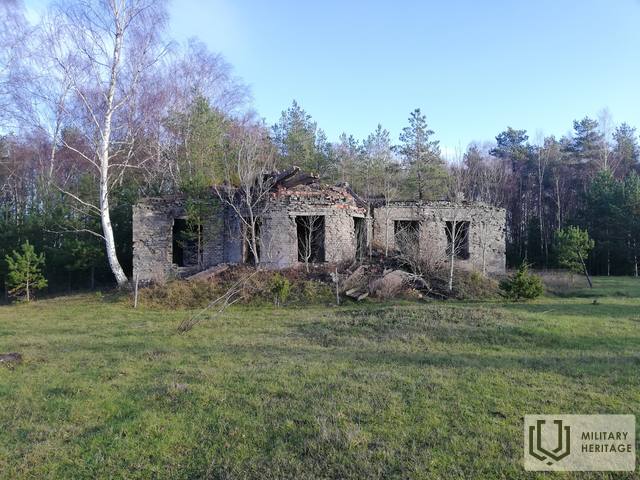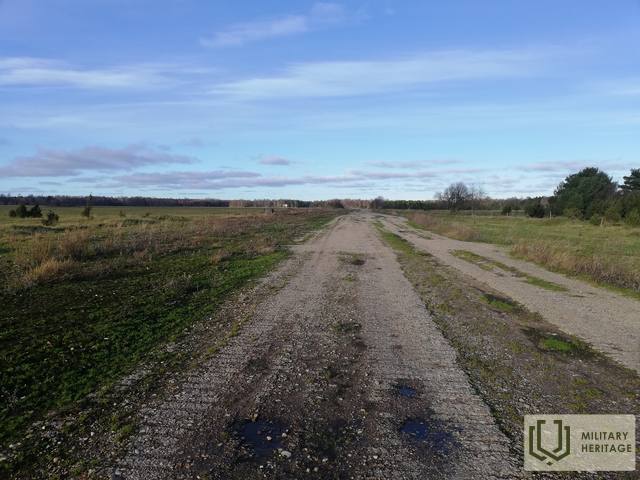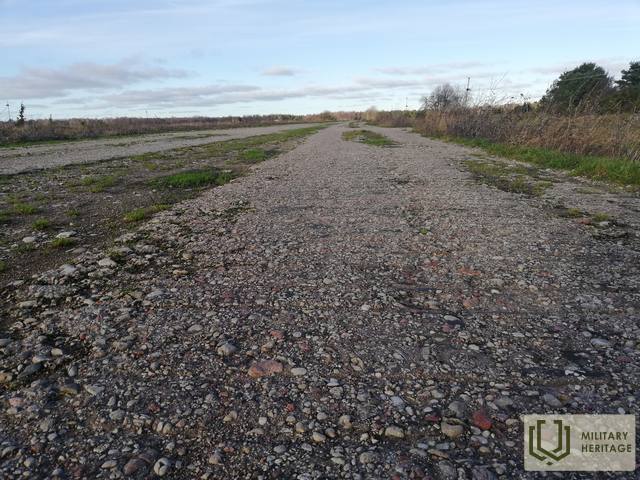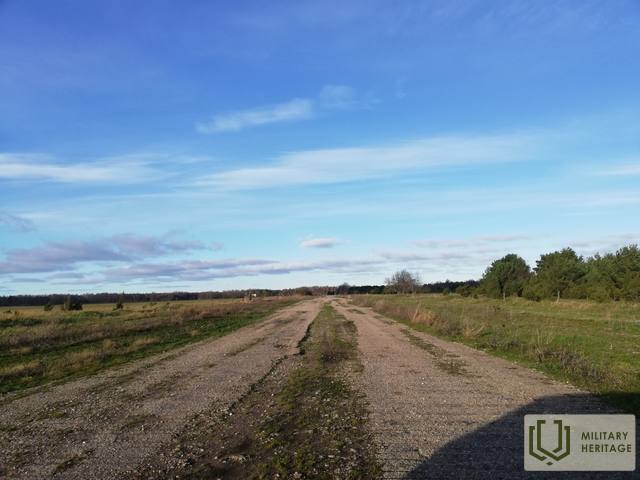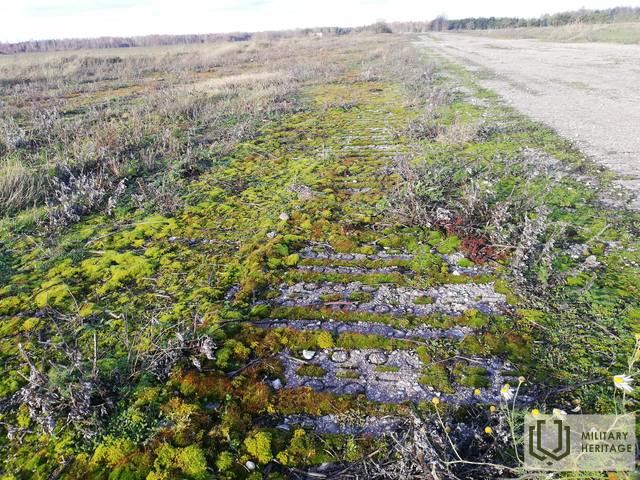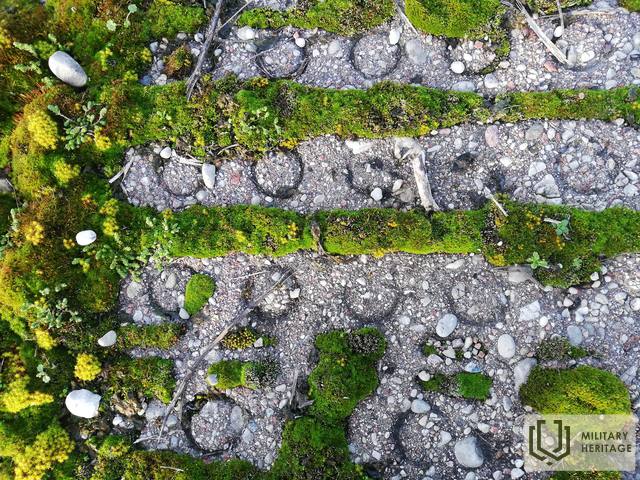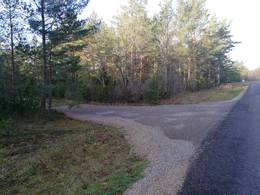Kogula airfield on Saaremaa
The construction of the Kogula Air Force Base began in August 1940.
Local residents were also recruited into this activity, which provided them with a good earning opportunity. The main job of the locals was to transport stones from the airstrip and its surroundings. Later, the airstrip was extended to accommodate long-range bombers. Since the military camp was not yet fully completed by 1941, the pilots and personnel working at the base were housed in nearby farms. At the beginning of the war, on June 26, 1941, the 12th single fighter squadron of the Red Banner Baltic Fleet arrived at Kogula airfield with the 24th fighter I-153, led by Major Kudryavtsev. On July 28, the 1st mine-torpedo aircraft regiment arrived at the airfield, led by Colonel Preobrazhensky. In August 1941, DB-3 bombers of the 1st mine-torpedo aircraft regiment from Kogula airfield performed a test and bombing flight to the North German resort and port city of Swinemünde. There, enemy air defenses were engaged. After bombing cities and settlements, the Greater German leadership issued Directive No. 34, which stated that "As soon as the opportunity arises, the ground, naval and air forces should, through joint efforts, eliminate enemy airfields on the islands of Dägo (Hiiumaa) and Öseli (Saaremaa). On the night of August 7, fifteen DB-3 aircraft took off from Kogula airfield to bomb Berlin. This continued nine times until September 5. On September 6, the Germans repeatedly bombed the Kogula air base. Six DB-3s were hit and destroyed. In the second half of September, the German ground forces occupied the Kogula air base, and on September 21, the Luftwaffe's 54th fighter squadron landed there. In the following years of the war, the Germans used the airfield until October 1944, when it was again occupied by Soviet troops.
After the war, the Soviet Air Force was stationed at Kogula airfield for some time. Later, due to the restructuring of the structure, the air regiment was distributed throughout Russia, and Kogula remained a reserve airfield. In 1965, the Soviet Army carried out large military maneuvers in Saaremaa. In connection with this, large four-engine transport aircraft landed at Kogula airfield, transporting personnel and equipment.
Since then, the airfield has stood mostly unused.
Sources:
1. Helme, Mehis. Air War in Estonia 1941 – 1945. Tallinn, 2016.
2. Jakovlev, Tormis. Saaremaa Museum Biennial 1997 – 1998. The Soviet Army in Western Saaremaa and its Relations with the Local Population. Compiled and edited by Olavi Pesti. Kuressaare, 1999.
3. Register of cultural monuments of the Estonian Heritage Board. Military heritage. https://register.muinas.ee
4. Guide to Estonian Military History, Talll 2010. Compiled by K. Luts.
5. Püüa, Endel. Saaremas at the Foot of Soviet Military Bases 1939–1941. Proceedings of the Saaremaa Museum No. 11. Kuressaare, 2020.
6. Püüa, Endel. Expertise of military sites in Saare County. Kuressaare, 2006.
7. Raukas, Ahto. Residual pollution of the former Soviet Union military bases and its elimination. Ministry of the Environment of the Republic of Estonia. Tallinn, 1999.
Related objects
Kogula (Mõnnuste) airfield
In 1940, the Soviet Union began constructing Kogula Military Base No. 40 or, as the locals say, Mõnnuste or Kogula Airfield. The airfield is located in the area between the villages of Sõmera, Kogula and Mõnnuste. The larger settlement for soldiers of the airbase was not constructed, but a central command building and warehouses were built in Sõmera. In the middle of the airfield lied a limestone orthodox church, built in 1868. The bell tower of the church was demolished as it became an obstacle for planes taking off and landing. The main runway threshold was located 30 metres from the church. The church still stands, albeit in dire condition and in ruins.
The officers’ clubhouse in Sõmera village, built after the Second World War, now stands in relatively good condition. The airfield can be seen on the southwestern side of Mõnnuste village. Parking spots for airplanes were built on the western side of the airfield using soil ridges.
At some point, a monument made of dolomite was placed in Kogula, bearing the words: “Here, at Kogula Airfield, is where the Red Banner Baltic Fleet took off in 1941 – the first planes that bombarded Berlin.”




